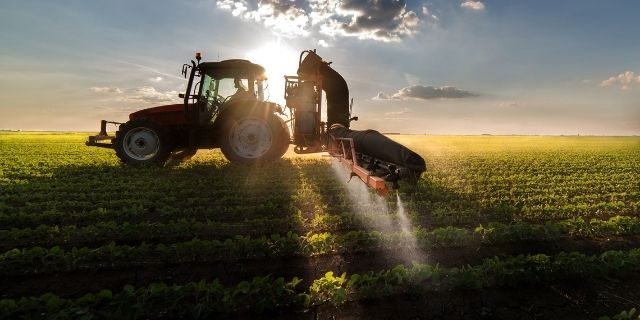07
Apr
Toxic Pesticides Are Polluting Over Half of Arable Land, Reinforcing Need for Global Organic Transition

(Beyond Pesticides, April 7, 2021) Toxic pesticides are putting more than half of the Earth’s farmland at risk of pesticide pollution that contaminates water, harms biodiversity, and ultimately undermines food security, according to research published in Nature Geosciences last month. While there is firm understanding that environmental crises like climate change are affecting the entire globe, the impacts of pesticide pollution are often thought of as local, or regional issues. This study, led by researchers based at the University of Sydney, Australia, underscores the wide-ranging effects of modern civilization’s global dependence on toxic pesticide use. “Although protecting food production is essential for human development, reducing pesticide pollution is equivalently crucial to protect the biodiversity that maintains soil health and functions, contributing towards food security,” said lead study author Fiona Tang, PhD.
To better understand pesticide risks at a global scale, scientists sectioned a world map into 10×10 kilometer (6.2×6.2 mile) squares that were assessed for their pesticide risk. The map also included data relating to water scarcity, biodiversity, and national income, to better determine trends and hot spots of concern. Scientists evaluated 92 different pesticide active ingredients and determined their risk within each square on the map based upon information derived from global databases. A pesticide was deemed to put a location at risk if the predicted environmental concentration of the pesticide was expected to be above the no-effect concentration for ecotoxicological harm. The high risk designation was noted when expected environmental concentrations were more than three orders of magnitude (1,000x) higher than the no-effect concentration.
Scientists determined that 75% of global agricultural land was at risk, with 31% at high risk. Considering the additive effects of pesticide use, researchers found that 64% of ag land was at risk from more than one of the 92 pesticide active ingredients evaluated. Shockingly, 21% of farmland is at risk by more than 10 pesticides.
Specific regions were highlighted by researchers for the risks pesticide use poses to water quality, endangered wildlife, or ecosystem stability. “Although the agricultural land in Oceania shows the lowest pesticide pollution risk, Australia’s Murray-Darling basin is considered a high-concern region both due to its water scarcity issues, and its high biodiversity,” said co-author Associate Professor Federico Maggi from the School of Civil Engineering and the Sydney Institute of Agriculture. Approximately 35% of land determined to be high risk of pollution overlapped with areas designated as biodiversity hotspots. High risks were also identified for Orange, South Africa; Huang He River Valley, China; Indus River Valley, India; and Parana, Argentina. While these areas were identified as “level 1” – a top tier concern by researchers due to combined risks of pesticide pollution, freshwater contamination/scarcity, and high biodiversity, broad swaths of the globe – 5.2 million square kilometers (~3.2 million sq miles) – are classified as level 2 and comprise large areas in Asia and South America.
The breadth and stretch of pesticide pollution across the Earth raises difficult questions. Although these questions are not new, they remain unanswered, and human civilization must continue to work through them. As Rachel Carson asked in Silent Spring, “How could intelligent beings seek to control a few unwanted species by a method that contaminated the entire environment and brought the threat of disease and death even to their own kind? Yet this is precisely what we have done. We have done it, moreover, for reasons that collapse the moment we examine them.”
Like the burning of fossil fuels, the use of highly toxic petroleum-based pesticides, has caused untold harm across the earth – making potable water precarious, degrading soil, and causing pollinators and the wildlife humanity depends upon die-off slowly but steadily. But the closer we examine whether pesticides are truly needed, the more we can see their use as Carson did: short-sighted. The global success of organic agriculture reveals that systems that are not reliant on these toxic chemicals can successfully grow food at the scale needed to feed the world.
The authors of this global study recommend a shift towards similar, safer practices in agriculture, noting that pesticide pollution is not a local issue. High pesticide use in other countries may be particularly problematic for the local environment, but that food is part of a global trade system, increasing the likelihood that another region’s pollution is an unwanted ingredient at dinner table far away from its original source.
“We urgently recommend that a global strategy is established to transition towards sustainable agriculture and sustainable living with low pesticide inputs and reduced food loss and food waste to achieve responsible production and consumption in an acceptable, profitable system,” the study reads. Eating with a Conscience means understanding the broad range of impacts pesticides cause – both in terms of how residues can affect our own health, and the areas where our food is grown. Help support this needed transition to organic by buying certified organic products whenever available. And for more information on the importance of organic for our future, see Beyond Pesticides Organic Agriculture program page.
Source: University of Sydney press release, Nature Geosciences










